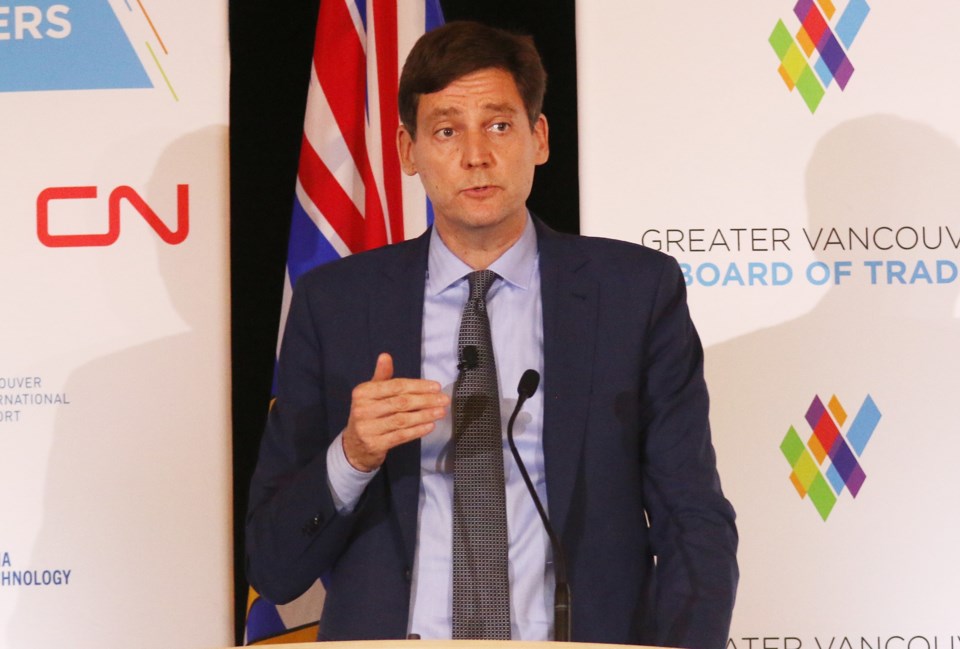Every month, the population of Surrey, B.C., expands by another 1,200 to 1,500 people, mostly newcomers to Canada.
It’s not Roxham Road-level chaos, where thousands of asylum seekers entered Canada monthly via an unofficial border crossing into Quebec before it was closed last year. But it is growth beyond capacity, with everything from schools and hospitals to transit and food banks increasingly stretched.
Premier David Eby, in a year-end interview, said he regrets he didn’t recognize sooner the challenges that fast-growing B.C. communities were facing.
“I hadn’t seen that as a potential threat to the goals that we’d set out to achieve provincially,” he said. When British Columbia first broke records for immigration in 2021, the provincial government of then-Premier John Horgan welcomed the news, saying it made B.C. a leader in Canada in attracting new talent to address its labour market needs.
Metro Vancouver says population growth is accelerating and will hit four million by 2045
The province has continued to break its own immigration records and now has the highest proportion of non-permanent residents in the country – roughly one-tenth of the population.
It wasn’t until last spring that Mr. Eby began to publicly complain about Ottawa’s handling of the immigration file. He described the federal government’s proposal to have B.C. take in more asylum seekers as “daft.” He also acknowledged that communities were frustrated with the impact on housing and access to health care of a fast-growing population.
“For those who are frustrated, I get it. We have about 10,000 people every 37 days moving into the province. Even though we’ve brought on tens of thousands of units of housing. … We need to do more.”
But finally acknowledging the problem wasn’t enough.
The 20 most livable Canadian cities for newcomers in 2024
In the October election, the governing NDP paid the price for the province’s growing pains. Those communities with the fastest growth – Surrey, Langley, Chilliwack, to name a few – dumped 11 NDP incumbents. It was a significant rebuke that left Mr. Eby governing with the smallest possible majority.
“We’re not keeping up with the services that are required for our population. It’s growing so quickly, and there’s a sense of frustration from the residents,” Surrey city council member Linda Annis said in an interview.
She said both the province and the federal government have neglected her fast-growing community, which needs greater investments in schools, hospitals, roads and transit. With 8,000 students sitting in school portables as just one example, she said, Surrey voters used the election to register that frustration.
Mr. Eby, who spent much of the election campaign focused on the Surrey battleground ridings, agreed that long wait times at Surrey Memorial Hospital’s emergency department are a problem. Up into the Fraser Valley, he recalled speaking with a school superintendent who told him he was lying awake at night worrying about how to accommodate the influx of students.
Ottawa has now tabled a plan to reduce immigration numbers over the next three years, but B.C. still faces challenges in accommodating its current population.
“Quebec and Ontario have seen way more asylum seekers than British Columbia has,” Mr. Eby said.
“The immigration challenges in British Columbia have a very different kind of appearance. It’s around just volumes of people, just the sheer number of temporary workers, international students, as well as traditional immigration streams, and in our ability to provide just the infrastructure for services.”
Mr. Eby is calling for more infrastructure funding from Ottawa and has been increasingly vocal about what he describes as blatant federal favouritism toward Ontario and Quebec. B.C. has secured just $6-million in federal interim housing funding out of the $1-billion that has been spread across the country.
“It’s hard to explain, except for me to reach the unavoidable conclusion that consistently, and it doesn’t matter whether it’s immigration or economic stimulus or equalization or you name it, British Columbia does not get as much as other provinces.”
Jeffrey MacDonald, a spokesman for Immigration, Refugees and Citizenship Canada, said the federal government’s Interim Housing Assistance Plan is intended to reimburse provinces for a portion of the money they spend on housing for asylum claimants.
But the money is not calculated on a per-capita basis, he said in a statement. Instead, provinces and municipalities have to apply for reimbursement.
The statement said Quebec had benefited from the program, as well as separate money specifically designated to that province.
“On June 10, 2024, the federal government announced a pledge of $750 million to the Government of Quebec, in recognition of housing and other services costs associated with the influx of asylum claimants between 2021 and 2023, particularly at Roxham Road,” Mr. MacDonald said in his statement.
“While a portion of this amount is covered under IHAP, the majority of the funding is separate from the program.”
Globe editorial: Canada’s past and present were built on immigration. Our future will be too
Besides funding, Mr. Eby would also like to see British Columbia have more influence over its immigration decisions.
“There’s an opportunity, in my opinion, for the province to take more control over the immigration system and to do a bit more nuanced job than Ottawa in responding to those areas where we’re short of people with the skills that we need, but balancing that with our ability to provide housing and services.”
He said British Columbians understand the importance of immigration to the economy.
“And simultaneously, they do understand that there is too much of a good thing – if we’re unable to provide the basics.”



